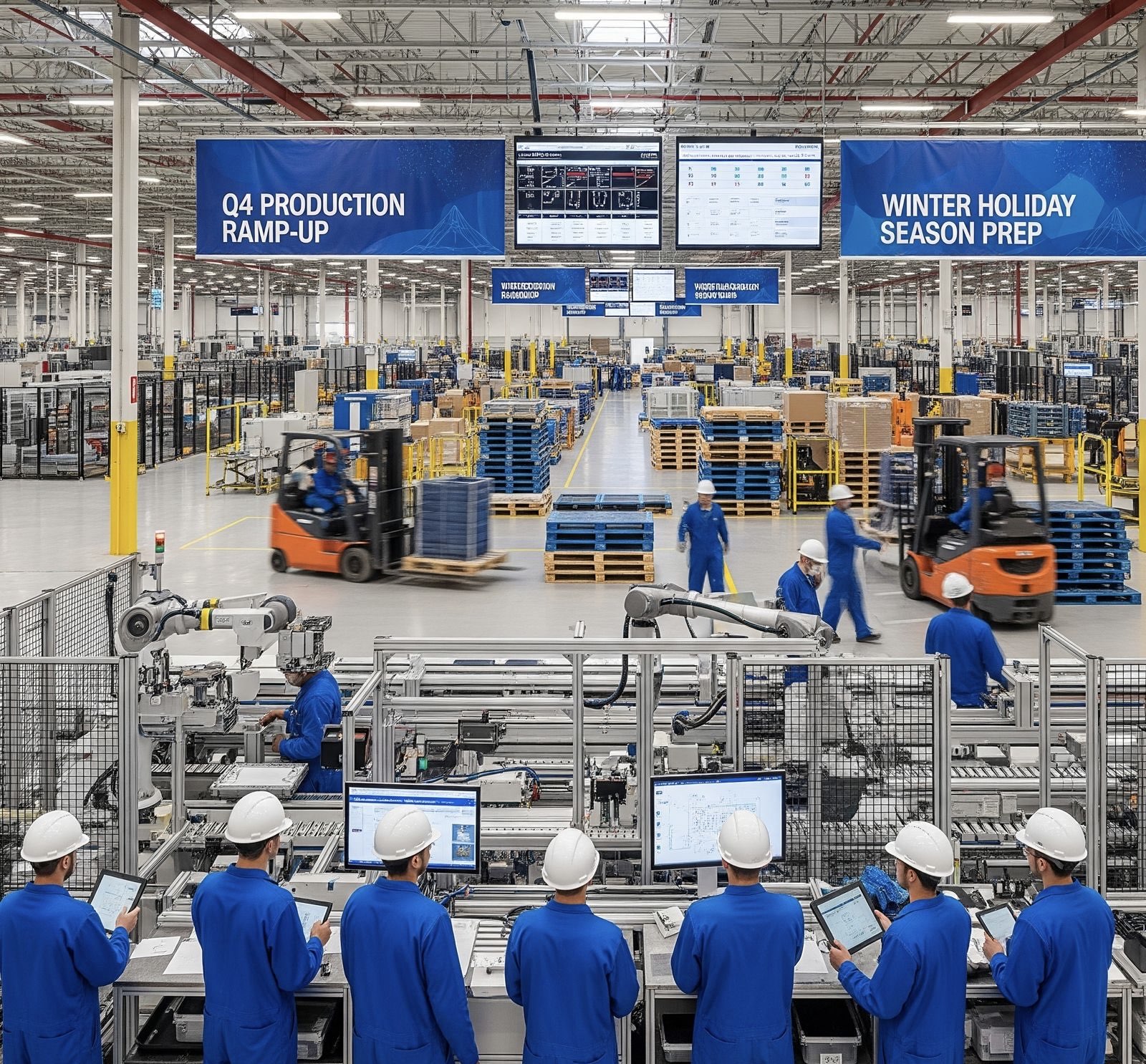
Seasons in Manufacturing
How Seasonal Demand Shapes Manufacturing Schedules
By: Destiny Dickerson
Introduction
In the world of manufacturing, timing is everything. Companies do not simply produce goods at a steady pace throughout the year; instead, they must respond to fluctuating consumer demand, which changes with the seasons, holidays, and cultural events. Seasonal demand is one of the most critical factors influencing production schedules, inventory planning, and workforce management. For many manufacturers, adjusting to these shifts is not just about efficiency, but also about survival in a highly competitive market.
Why Seasonal Demand Matters
Seasonal demand refers to predictable fluctuations in product sales that occur during specific times of the year. For example, toy manufacturers ramp up production months before December to prepare for the holiday shopping season, while beverage companies often increase supply in the summer when people consume more cold drinks. Without proper planning, companies risk running out of products during peak times or overproducing when demand falls. Both outcomes result in lost profits, wasted resources, and potential damage to the brand’s reputation.
Real-World Examples of Seasonal Impact
A well-known example is the ice cream industry. Demand for ice cream is highest during the summer months, requiring manufacturers to increase production capacity from late spring. Facilities often operate longer shifts and hire temporary workers to meet the needs of consumers. Conversely, in winter, demand drops, leading to reduced production runs and, in some cases, temporary plant shutdowns.
Another example comes from the fashion industry. Clothing manufacturers plan their production cycles around the seasons, releasing collections for spring, summer, fall, and winter. Retailers depend on the timely delivery of these items, meaning any delay in manufacturing can disrupt entire sales campaigns. The ability to align production with seasonal fashion trends often determines which brands stay ahead of competitors.
The Role of Forecasting and Planning
To manage seasonal changes effectively, manufacturers rely on demand forecasting. Using historical sales data, companies can accurately predict the amount of inventory needed at specific times of the year. For instance, a company producing sports equipment can examine past years to anticipate higher sales of basketballs during winter school seasons or increased purchases of surfboards in coastal areas during the summer.
Forecasting, however, is not foolproof. Unexpected factors, such as changes in consumer preferences, economic downturns, or supply chain disruptions, can alter demand. This is why flexibility is key; manufacturers must be prepared to adjust schedules quickly.
ERP Systems and Seasonal Scheduling
One of the most effective tools for managing seasonal demand is an Enterprise Resource Planning (ERP) system. ERP refers to software that integrates core business processes, such as inventory, production planning, supply chain management, and finance, into a single platform. With ERP, manufacturers gain real-time visibility into their operations, enabling them to adjust production schedules in response to shifts in demand.
For example, a candy manufacturer preparing for Halloween can utilize ERP to track inventory levels of raw materials, such as sugar and chocolate, monitor production lines, and coordinate distribution to retailers. If sales forecasts change, the ERP system enables managers to reschedule production, thereby preventing shortages or overstocking quickly.
Balancing Workforce and Supply Chain
Seasonal demand not only affects machines and schedules but also people. Many manufacturers hire seasonal workers to handle peak production. Food processing plants, for instance, often bring in additional staff during harvest seasons when raw materials are abundant. Similarly, supply chain adjustments must be made to ensure raw materials arrive on time. A shortage of packaging materials or shipping delays can throw off carefully planned schedules, underscoring the importance of strong supplier relationships.
Conclusion
Seasonal demand is an unavoidable challenge in manufacturing, but it is also an opportunity. Companies that can accurately forecast demand, align their schedules, and use tools like ERP systems to remain flexible are better positioned to succeed. By learning from industries such as ice cream, fashion, and candy production, manufacturers can see how adapting to the calendar’s rhythms ensures both efficiency and profitability. In today’s fast-paced market, mastering seasonal scheduling is not just a competitive advantage; it is a necessity.
Sources
- Investopedia – https://www.investopedia.com/terms/s/seasonal-demand.asp
- Deloitte Insights – https://www2.deloitte.com/insights/us/en.html
- NetSuite ERP Overview – https://www.netsuite.com/portal/products/erp.shtml
- Manufacturing.net – https://www.manufacturing.net